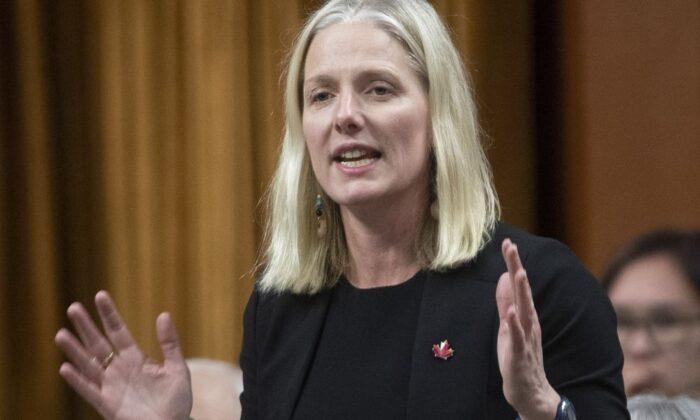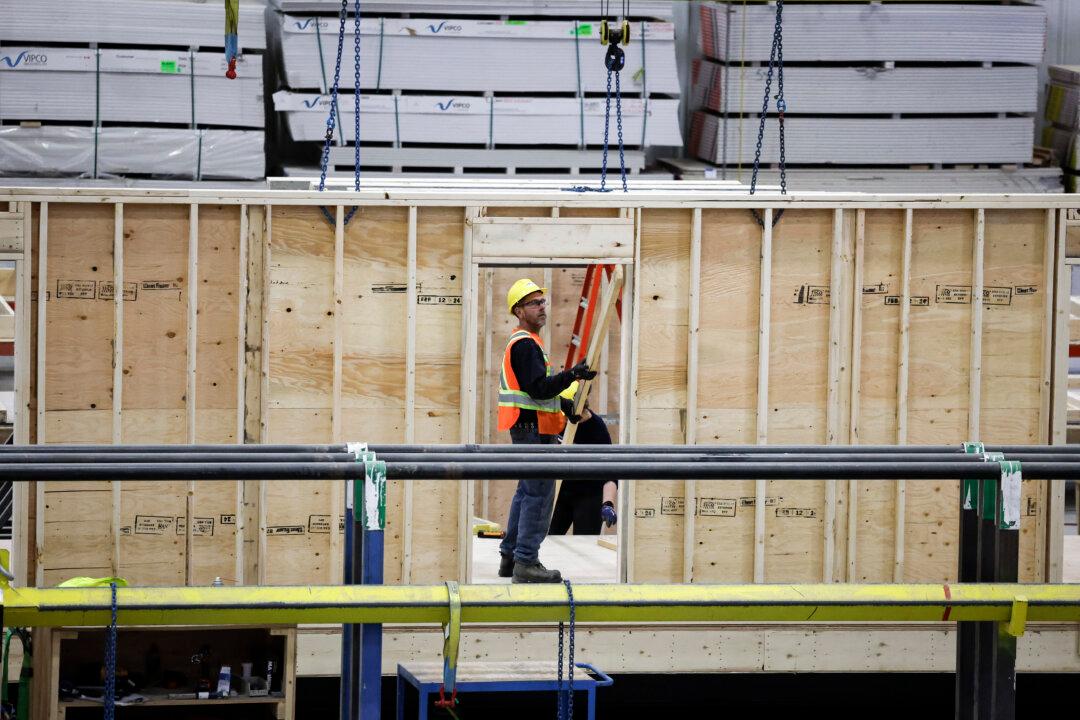OTTAWA—The federal government is preparing to spend more than $3 billion in infrastructure money on projects to make facilities more pandemic-resistant and encourage outdoor activities in the age of COVID-19, Infrastructure Minister Catherine McKenna says.
McKenna told The Canadian Press in an interview Tuesday that while many of her cabinet colleagues have spent the last two months responding to the immediate crisis, her department has been doubling its effort to review and approve infrastructure projects submitted by provinces and territories for federal funding.
Hundreds of applications have been greenlit in recent weeks, though the specific announcements have yet to be made. But she said that in conversations with provincial and territorial leaders since March, it became clear there were needs created by the pandemic that weren’t being met under the existing programs.
“We have adapted our infrastructure program to the new reality of COVID,” said McKenna.
It will include things like retrofitting health care facilities and schools, particularly with a view to allowing for more physical distancing and making it easier to practice good hygiene like handwashing. Projects to help people find ways to get outside safely will also be a priority, such as new or better paths, bike lanes, and nature trails.
The government is setting aside up to 10 percent of the $33.5 billion Investing in Canada program, which is delivered through agreements with each province and territory, as a COVID-19 fund to focus on responding to the pandemic, with Ottawa shouldering more of the bill.
“That stream is really recognizing some real opportunities to support the health response but also the economic response so we get projects going in the next one to two years,” said McKenna.
About half the Investing in Canada money has yet to be allocated, said McKenna.
Normally Ottawa was covering one-third of the cost of municipal projects, and one-half of the cost of provincial projects. The COVID-19 program will bump Ottawa’s share up to 80 percent. How municipal and provincial governments share the remaining 20 percent of the costs of municipal projects will be up to each province.
Ottawa will foot 100 percent of the bill for projects in the territories, up from 75 percent previously. Yukon, Northwest Territories and Nunavut are also getting another year to finish the work, allowing for the fact getting supplies to the territories for building this summer will be difficult, said McKenna.
Provinces will have to get things done by the end of the 2021 construction season, though McKenna said extra effort is being given to trying to get many things started this summer.
McKenna said the government’s previous goals for its infrastructure programs—namely public transit, green infrastructure and high-speed internet access—remain but the adaptations will give greater room to meet those goals and get things built quicker so the needs are met and jobs are created.
But she insists it will not be as easy as approving everything that gets suggested, and while approval processes will be accelerated they won’t be eliminated.
“We need to get the most value for our money, which is not just shovel-ready projects, but shovel-worthy projects,” she said.
Projects that fulfill multiple goals will be the highest priority, she said.
McKenna would not say what Canadians could expect in economic stimulus programs once the crisis response to COVID-19 winds down.
“We’re trying to understand right now what is the scale and what are the needs,” she said.
“This is not a new stimulus program but an attempt to be smarter and more efficient with existing programs.”






Friends Read Free